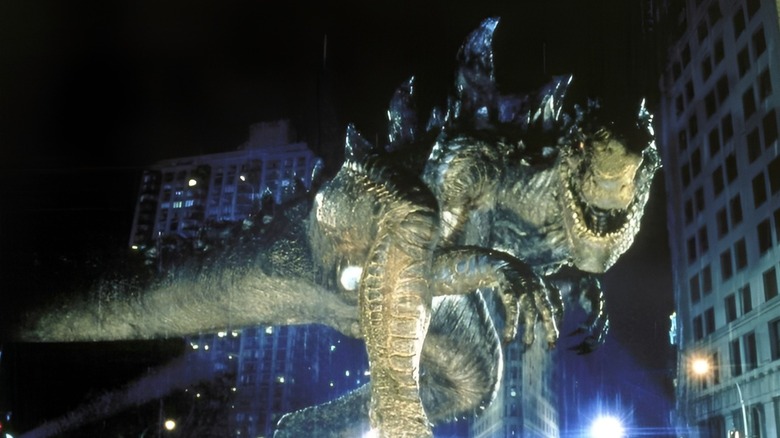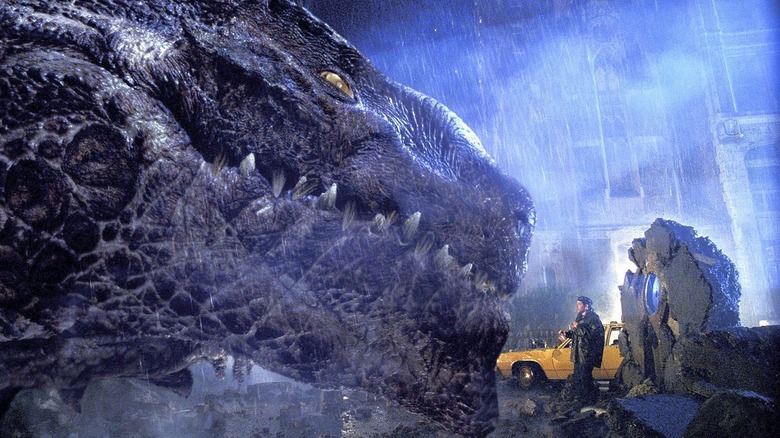Why Godzilla Became 'Sexy' And 'Sensual' In His Most Controversial Redesign
Godzilla's first time out west took fans by surprise. Much has been said about the monster's radical design change made for Roland Emmerich's 1998 film "Godzilla" and how that version bears little resemblance to the original Toho-created kaiju. But for the creators of the much-maligned remake, keeping Godzilla true to his classic iteration was less important than upping his ... sex appeal?
In a 1998 interview with The Morning Call, co-writer and producer Dean Devlin shared that the team aimed to emphasize certain aspects of their Godzilla's design such as his shoulders and calves. Creature designer Patrick Tatopoulos (who is the namesake of Matthew Broderick's Dr. Niko Tatopoulos in the movie) was tasked with bringing this concept to life, with Devlin instructing, "I wanted Godzilla very slim and muscular. Sexy, even. When his tail swishes along buildings, it's almost sensual." Still wanting to imbue their Godzilla with reptilian traits, Tatopoulos and Delvin watched several documentaries about lizards to find places where such sensual features could be applied organically. Eventually, they landed on the naturally muscular arms and legs found on these reptiles, resulting in Godzilla's elongated limbs and slim build.
Few people went into "Godzilla" with the expectation of getting turned on by a giant radioactive lizard. In fact, it's safe to say that most fans had the very opposite reaction to the creature's design.
Toho renamed and slaughtered America's Godzilla
Out of the many issues that fans and critics alike had with 1998's "Godzilla," the look and characterization of the titular monster received the worst backlash. In place of the indestructible, city-destroying behemoth that captured the hearts and minds of audiences all over the world was a creation that resembled an iguana and was easily bested by military forces.
Viewers in Japan were especially distressed by the new look. After camping outside the theater in great anticipation for the film, then-16-year-old fan Masato Mukohata told the Los Angeles Times, "We've been building up our expectations since rumors first surfaced of an American Godzilla in 1994. My dreams were crushed." Similar sentiments were carried by those who worked on Toho's long-running series of Godzilla films. Suit actors Hauro Nakajima and Kenpachiro Satsuma expressed dismay at the monster's new look, with Satsuma saying in a 1998 G-Con interview, "Honestly speaking, I am a bit disappointed."
With TriStar's planned "Godzilla" trilogy in the can, Toho took action once the American studio's license expired. Producer Shōgo Tomiyama rebranded the monster as "Zilla," claiming that Hollywood took the God-like qualities out of the character. Zilla would join the extensive monster roster of 2004's "Godzilla: Final Wars" where the creature goes on a rampage throughout Sydney, Australia. It eventually faces the real Godzilla, who dispatches the inferior creation in only a few seconds using his atomic breath. Perhaps if more time was put into making Zilla scary and not sexy, he might have had a shot.

